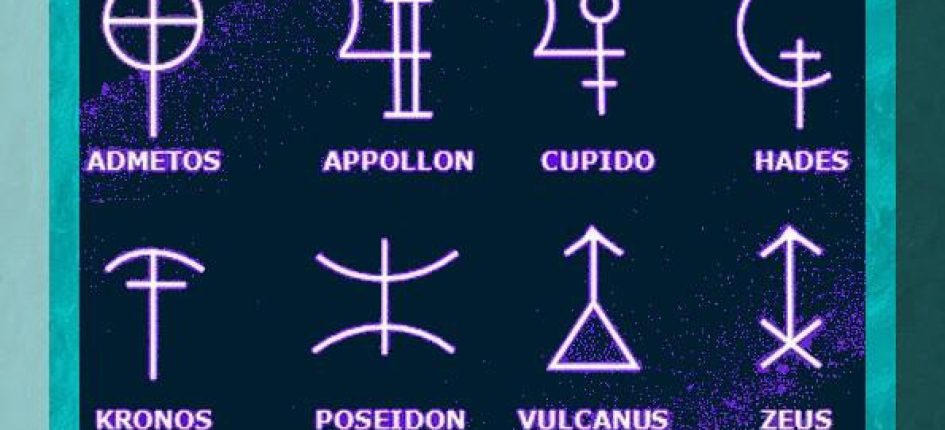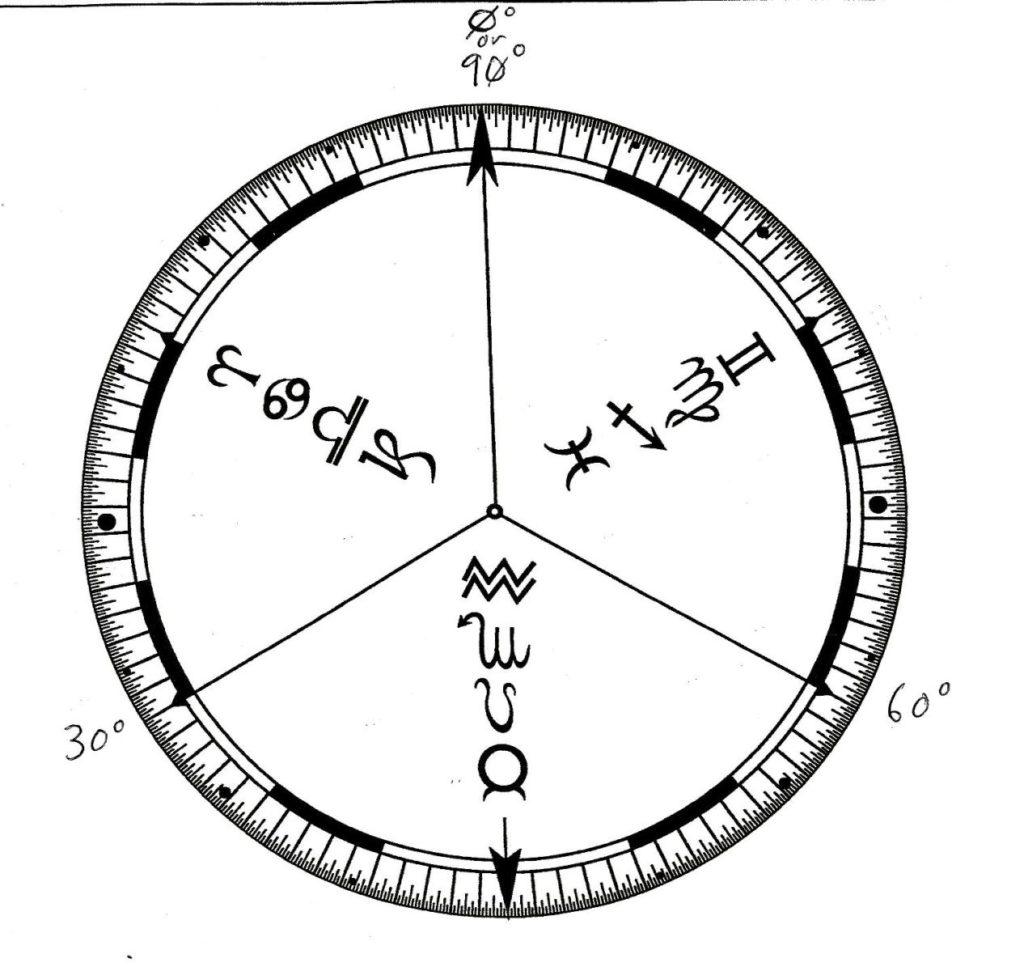
Written by Karl Heinz Ottinger
Uranian Astrology is a purely mathematical-geometric model of astrology. Its inspiration was Alfred Witte. Witte began his career as an astrologer around 1913. It should be known that Witte was not a professional astrologer since he served as a surveyor in the Hamburg Planning District. In 1919 he became a member of the Kepler team in Hamburg and has since come into contact with Friedrich Sieggrun where he developed a long-standing friendship and cooperation.
The start was on the 360-degree cycle but Alfred Witte’s restless and particularly pioneering mind managed to capture the 90-degree cycle. Witte himself had found the hypothetical planets Cupido, Hades, Zeus and Kronos. Later, around 1924, Sieggrun introduces Apollon, Admetos, Vulkanus and Poseidon. The group of pioneering German astrologers was Alfred Witte, Ludwig Rudolph, Friedrich Sieggrun, and Dr Hubert Korsch, Reinhold Ebertin, Herman Lefeldt.
In 1926 the Regelwerk fur Planetenbilder (first edition) was released in Germany, which contains neither Pluto nor the additional planets used by Uranian Astrology. Two more editions followed in 1932 and 1935 respectively. In 1940, Reinhold Ebertin publishes the book The Kombination der Gestirneinfluße, The Combinations of Cosmic Influences, which contains intervals with Pluto but not with Hypotheticals. In 1946 Herman Lefeldt releases the Regelwerkfur Planetenbilder where we have the introduction of both Pluto and the rest of the planets used by Uranian.
The 90 Degrees Circle and the use of the aspects
To grasp the idea of Alfred Witte is extremely simple. I believe we all know from Classical Astrology the qualities, that is, cardinal, fixed and mutable zodiac signs. The philosophy of the 90’s cycle is extremely simple. From zero to 30 are cardinals, from 30 to 60 the fixed and from 0 to 90 the mutable. So, if we want to apply on paper, we will have the following:
Suppose the Ascendant is on the 5th of Libra while Saturn is on the 5th of Cancer. We will go to the 5th degree of cardinals (ie from 0 to 30) and write the Ascendant as well as Saturn there. In your eyes it will seem like a conjunction. Suppose we have Mercury in the 16th degree of Leo while Mars is in the 17th of the Scorpio. We will write in the area where the constellation expands, and we will put 30 (where is the zero of fixed + 16 = 46. So, in the 46th degree we will put Mercury and in the 47th Mars. If we have the Moon in the 21st degree of Gemini and of Jupiter in the 10th of Virgo then we will write with reference-starting point 60. So 60 + 10 = 70. So in 70 we will write Jupiter and 81 in the Moon.

The Circle of 90 Degrees of Uranian Astrology
Alfred Witte’s School uses the so-called hard aspects, that is, the sum, the semicircle, the square, the one and a half square, the contrast as well as the 22.30 and all its derivatives. From this point on, we start to get into completely mathematical models. There are the axes of Interval (you will find their interpretation in the article “Uranian Axes”) of the type A / B, which is exactly mentioned in the Interval of two planets or points. For example, SATURN / NEPTUNE means Saturn-Neptune. Respectively, the equation of type A = B / C, or otherwise B / C-A, refers to the relation of a third factor (planet or point) to a particular Interval. For example, the equation VENUS = KRONOS / HADES indicates that Venus is located in the middle of KRONOS and HADES.
The Planets of Uranian Astrology
This is Cupido and does a complete circle around the Sun in 262.5 years. Cupido symbolizes a combination of Zeus and Venus. This combination shows us the social expansion of Zeus and the artistic nature of Venus. Its involvement in axes (A / B) or in sensitive points (A + B-C) brings to mind the concept of companionship. Indicates groups of people, clubs, parties, organizations, companionship.
And the name of it is Hades. Its full life is 360.66 years. It symbolizes anything dirty, filthy, unhealthy and impure. It also depends on what axis it will fall into to form an equation, it relates to secrets, discoveries buried in the earth (archeology) as well as ‘forgotten’ languages (e.g. Aramaic, Sanskrit or Latin). People in the underworld, lying around on the ground or being doctor is related to Hades.
This symbol is Zeus. In ancient Greek the causal has two types of call: Zenas and Zeus. In classical astrology Jupiter is the planet of expansion. Zeus here is concerned with shooting, creativity and prenatal ability. The Uranian Zeus is closest to the Greek type of God, as it relates to shots, lightning, but also to one’s ability to create. Also, for those who have some faith in a Higher Power it should be made clear that Zeus’s actions are what some perceive as Divine intervention.
This symbol is KRONOS and should not be confused with Saturn in classical Astrology. Uranian KRONOS does a full range of 521.8 years and symbolizes power. Government officials, high-ranking officials, have Kronos involved in equations. It has to do with tall buildings, pilots, skyscrapers, captains, etc.
Apollon is a planet that deals with expansion, increase in number. It has to do with science, commerce, astrology and the Pacific Missions. A complete cycle of Apollon lasts 576 years.
Admetos does a complete rotation in 624 years. It speaks for immovable viewpoints, stagnation and seat. Often it takes a stand on issues related to real estate, specialization or death.
Vulcanus is associated with the dynamics, power and energy. It enforces an equation. Its rotation is a period of 663 years.
Poseidon does a full – time rotation every 740 years. It shows inspiration, religion, Spirit, philosophy.